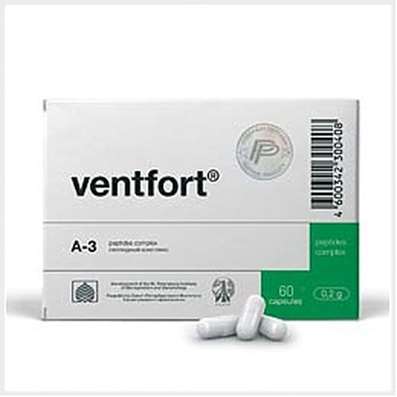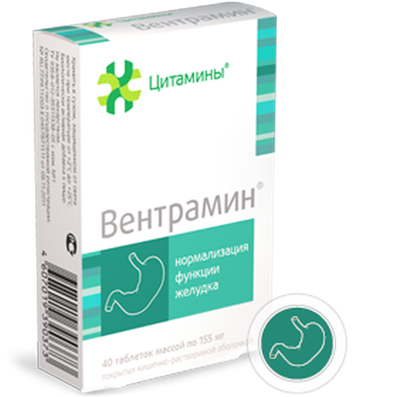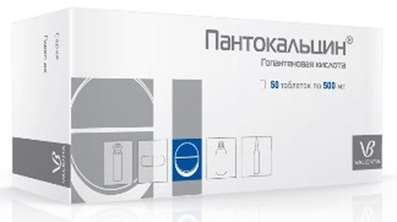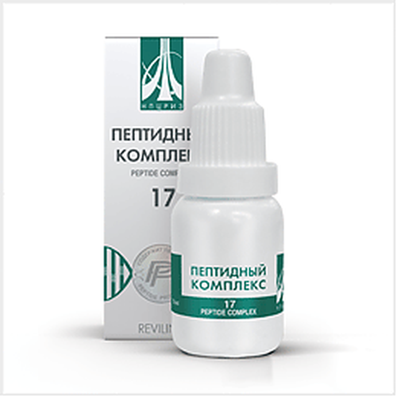Instruction for use: Bi-Xikam
I want this, give me price
Active substance Meloxicam
ņ“’ M01AC06 Meloxicam
Pharmacological group
NSAIDs - Oxicams
Nosological classification (ICD-10)
M06.9 Other specified rheumatoid arthritis
Rheumatoid arthritis,Pain syndrome in rheumatic diseases, Pain in rheumatoid arthritis, Inflammation in rheumatoid arthritis, Degenerative forms of rheumatoid arthritis, Children's rheumatoid arthritis, Exacerbation of rheumatoid arthritis, Acute articular rheumatism, Rheumatic arthritis, Rheumatic polyarthritis, Rheumatoid arthritis, Rheumatic polyarthritis, Rheumatoid arthritis, Rheumatoid arthritis of active course, Rheumatoid arthritis, Rheumatoid polyarthritis, Acute rheumatoid arthritis, Acute rheumatism
M13.9 Arthritis, unspecified
Arthritis,Purulent arthritis (non-infectious), acute Arthritis,Pain in acute inflammatory diseases of the musculoskeletal system,Pain in chronic inflammatory diseases of the musculoskeletal system,The pain in osteoarthritis, Inflammation in osteoarthritis, Inflammatory arthropathy, Inflammatory and degenerative joint diseases, Inflammatory disease of the musculoskeletal system, Inflammatory joint disease, Inflammatory diseases of the musculoskeletal system, destructive arthritis, The disease of the musculoskeletal system, Diseases of the musculoskeletal system, Diseases of the musculoskeletal system and connective tissue, Infections musculoskeletal system, monoartrit, Non-infectious arthritis, rheumatic arthritis, Osteoarthritis, Acute inflammation of the musculoskeletal tissue, Acute inflammatory diseases of the musculoskeletal system, Acute inflammatory condition of the musculoskeletal system, Acute arthritis, Acute osteoarthritis, Post-traumatic osteoarthritis, Reactive arthritis, Chronic inflammatory diseases of the joints, Chronic arthritis, Chronic inflammatory arthritis, Chronic inflammation of the inner layer of the joint capsule, Chronic inflammation of the joint capsule,Chronic inflammatory disease of the joints, Exudative arthritis
M25.5 Pain in the joint
Arthralgia, Pain syndrome in musculo-articular diseases, Pain syndrome in osteoarthritis, Pain syndrome in osteoarthritis, Pain syndrome in acute inflammatory diseases of the musculoskeletal system, Pain syndrome in chronic inflammatory diseases of the musculoskeletal system, Pain in the joints, Soreness of the joints, Soreness of joints in severe physical exertion, Painful inflammatory joint damage, Painful conditions of the musculoskeletal system, Painful joint conditions, Painful traumatic affection of joints, Pain in the musculoskeletal system, Pain in Shoulder Joints, Pain in the joints, Joint pain, Joint pain with injuries, Musculoskeletal pain, Pain with osteoarthritis, Pain in the pathology of the joints, Pain in rheumatoid arthritis, Pain in chronic degenerative bone diseases, Pain in chronic degenerative joint diseases, Bone-joint pain, Joint pain, Arthritic pain of rheumatic origin, Articular pain syndrome, Joint pain, Rheumatic pain, Rheumatic pains
M45 Ankylosing spondylitis
Ankylosing spondylarthrosis, Marie-Strumpel disease, Ankylosing spondylitis, Pain syndrome in acute inflammatory diseases of the musculoskeletal system, Pain syndrome in chronic inflammatory diseases of the musculoskeletal system, Bechterew's disease, Ankylosing spondylitis, Diseases of the spinal column, Rheumatic spondylitis, Bechterew-Marie-Strumpel disease
Composition and form of release
Tablets 1 table.
meloxicam 7.5 mg/15 mg
auxiliary substances: sodium citrate dihydrate; lactose anhydrous (milk sugar); MCC (microcrystalline cellulose); PVP (polyvinylpyrrolidone) 25,000; silicon dioxide colloid (aerosil); Polyplasdone IKS EL-10 (crospovidone); magnesium stearate
in the package of a contiguous cell 10 units; in a pack of cardboard 2 packs.
Description of dosage form
Tablets of light yellow color, flat-cylindrical form.
pharmachologic effect
Pharmacological action - anti-inflammatory, analgesic.
Pharmacodynamics
Meloxicam is an NSAID with an analgesic, anti-inflammatory and antipyretic effect. The mechanism of action is the selective inhibition of the enzymatic activity of COX-2, which participates in the biosynthesis of PG in the inflammatory region. When administered in high doses, long-term use and individual characteristics of the organism, selectivity may decrease. Suppresses the synthesis of PG in the inflammatory region to a greater extent than in the mucosa of the gastrointestinal tract and the kidneys.
Pharmacokinetics
Well absorbed from the digestive tract (gastrointestinal tract), the absolute bioavailability of meloxicam - 89%, does not depend on food intake. When using the drug inside at doses of 7.5 and 15 mg, its concentration in the plasma is dose-dependent. The equilibrium concentration is achieved within 3-5 days. With prolonged use of the drug (more than 1 year), the concentrations are similar to those observed after the first achievement of a steady state of pharmacokinetics. Binding to plasma proteins is 99%. The range of differences between the maximum and basal concentrations of the drug after its administration once a day is relatively small and amounts to using a dose of 7.5 mg 0.4-1.0 μg / ml, and when a dose of 15 mg is 0.8-2, 0 μg / ml, (Cmin and Cmax, respectively). Meloxicam penetrates through the histogematic barriers, the concentration in the synovial fluid reaches 50% of the Cmax drug in the plasma.
Almost completely metabolized in the liver with the participation of CYP 2C9, CYP 3A4 and peroxidase with the formation of four inactive derivatives.
It is excreted equally with feces and urine, mainly in the form of metabolites. With feces, less than 5% of the daily dose is excreted unchanged, in urine, in unchanged form, the drug is found only in trace amounts. T1 / 2 meloxicam is 15-20 hours. Plasma clearance is an average of 8 ml / min. In elderly people, the clearance of the drug is reduced. The volume of distribution is low and averages 11 liters.
Hepatic or renal insufficiency of moderate severity has no significant effect on the pharmacokinetics of meloxicam.
Indication
Inflammatory and degenerative diseases of the joints, accompanied by pain syndrome:
rheumatoid arthritis;
osteoarthritis;
ankylosing spondylitis (Bechterew's disease).
Contraindications
hypersensitivity to any component of the drug;
aspirin bronchial asthma;
exacerbation of peptic ulcer of the stomach and duodenum;
Gastrointestinal, cerebrovascular or other bleeding;
severe renal failure (if hemodialysis is not performed);
severe hepatic impairment;
severe heart failure;
pregnancy;
lactation period;
children's age till 15 years.
Carefully:
patients of advanced age;
erosive-ulcerative lesion of the gastrointestinal tract in the anamnesis.
pregnancy and lactation
The drug is not recommended for use during pregnancy and lactation.
Side effects
Organs of the digestive system: nausea, vomiting, abdominal pain, diarrhea, constipation, flatulence, erosive and ulcerative lesions of the gastrointestinal tract, perforation of the stomach or intestines, gastrointestinal bleeding (latent or apparent), increased activity of hepatic enzymes, hepatitis, colitis, stomatitis, dry mouth, esophagitis.
Cardiovascular system: tachycardia, increased blood pressure, sensation of hot flushes to the face.
Respiratory system: exacerbation of asthma, cough.
CNS (central nervous system): headache, dizziness, tinnitus, disorientation, confusion of thoughts, sleep disturbance.
Genitourinary system: edema, interstitial nephritis, renal medullary necrosis, urinary tract infection, proteinuria, hematuria, renal insufficiency.
Organs of vision: conjunctivitis, blurred vision.
Skin: itching, skin rash, urticaria, exudative erythema multiforme (including Stevens-Johnson syndrome), toxic epidermal necrolysis (Lyell's syndrome), increased photosensitivity.
The system of hematopoiesis: anemia, leukopenia, thrombocytopenia.
Allergic reactions: anaphylactoid reactions (including anaphylactic shock), swelling of the lips and tongue, allergic vasculitis.
Other: fever.
Interaction
When used simultaneously with other NSAIDs (including salicylates), the risk of erosive and ulcerative lesions and bleeding of the gastrointestinal tract increases; with antihypertensive drugs, as well as with intrauterine contraceptives - there may be a decrease in the effectiveness of their action; with lithium preparations - it is possible to increase the level of lithium in plasma (it is recommended to control the concentration of lithium in the blood); with methotrexate - the hematotoxic effect of the latter increases (periodic control of the general blood test is shown); when used simultaneously with diuretics and with cyclosporine, there is a potential for the development of acute renal failure in patients with dehydration. Combination with anticoagulants and antiplatelet agents (heparin, ticlopidine, warfarin), as well as with thrombolytic drugs (streptokinase, fibrinolysin) increases the risk of bleeding (periodic monitoring of blood clotting indices is necessary). Cholestyramine binds meloxicam, as a result, its excretion through the digestive tract increases.
Dosing and Administration
Inside, with food, once a day.
Rheumatoid arthritis - 15 mg / day. Depending on the therapeutic effect, the dose can be reduced to 7.5 mg / day.
Osteoarthritis - 7.5 mg / day. If the dose is ineffective, it can be increased to 15 mg / day.
Ankylosing spondylitis - 15 mg / day.
The maximum daily dose should not exceed 15 mg, in patients with an increased risk of side effects, the initial dose should not exceed 7.5 mg / day.
Overdose
Symptoms: increased side effects
Treatment: gastric lavage, the appointment of activated charcoal (within the next hour after taking), symptomatic therapy. There is no specific antidote. Cholestyramine accelerates the excretion of the drug from the body.
Precautionary measures
Care should be taken when using the drug in patients who have a history of peptic ulcer and duodenal ulcer, as well as patients who are on anticoagulation therapy. In such patients, the risk of exacerbation of ulcerative-erosive gastrointestinal diseases is increased.
Caution should be exercised and the indicators of renal function should be monitored when the drug is used in elderly patients, patients with chronic heart failure with circulatory insufficiency, in patients with cirrhosis of the liver, as well as in patients with hypovolemia as a result of surgical interventions.
In patients with renal insufficiency, if creatinine clearance is> 25 ml / min, dosage adjustment is not required.
For patients on dialysis, the dosage of the drug should not exceed 7.5 mg / day.
Patients taking both diuretics and meloxicam should take a sufficient amount of fluid.
If allergic reactions (itching, skin rash, urticaria, photosensitization) occur during treatment, you should contact your doctor to resolve the issue of stopping the drug.
special instructions
Management of vehicles, maintenance of machines and mechanisms
The use of the drug may cause the occurrence of side effects in the form of headaches and dizziness, drowsiness. In these cases, the management of vehicles and maintenance of machinery and mechanisms, as well as other activities requiring concentration of attention, should be abandoned.
Storage conditions
At a temperature of no higher than 25 į C.
Keep out of the reach of children.
Shelf life
5 years.
Do not use after the expiry date printed on the package.

 Cart
Cart





